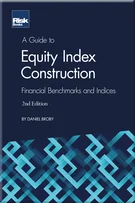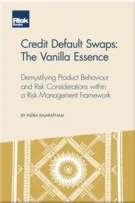A Model for Estimating the Liquidity Valuation Adjustment on OTC Derivatives
Umberto Cherubini and Sabrina Mulinacci
Introduction to 'Managing Illiquid Assets'
A Brief History of Valuation: A Personal View
Case Study: Funding and Liquidity Considerations in the US Residential Mortgage Market
Foundations of Liquidity Risk Management
Valuation of Illiquid Assets: Third Party Sources
A Model for Estimating the Liquidity Valuation Adjustment on OTC Derivatives
Global Valuation and Dynamic Risk Management
A Regulatory Perspective on Prudent Valuation and Best Practice in Product Control
Beyond Valuation: Basel III and Its Impact on Managing Illiquid Assets
Model Risk, or the Risk of Using Models
Stress Testing in Financial Institutions
Case Study: Risk Governance and Management Practice of the Hana Financial Group
Consider a wealthy individual willing to buy a derivative contract, say a call option, on a large amount of the underlying asset, a “block”, as it is called in the market microstructure literature. They have to choose between two main alternatives. The first is to design a replication strategy equivalent to the derivative contract and to implement it on his own. The other is to look for a specialised intermediary, in some financial marketplace, such as the City of London or Wall Street, which would be willing to write the contract for them. In the latter case, the intermediary would implement the replication strategy on the buyer’s behalf, and would charge them the replicating cost plus a fee. Since the underlying is a large amount, implementing the dynamic hedging strategy would imply price impacts on the market that represent the liquidity cost of the replicating strategy. The intermediary would then add this cost to the fair value of the derivative contract: we call this addon the liquidity valuation adjustment (LVA) of the contract. Then the intermediary
Copyright Infopro Digital Limited. All rights reserved.
As outlined in our terms and conditions, https://www.infopro-digital.com/terms-and-conditions/subscriptions/ (point 2.4), printing is limited to a single copy.
If you would like to purchase additional rights please email info@risk.net
Copyright Infopro Digital Limited. All rights reserved.
You may share this content using our article tools. As outlined in our terms and conditions, https://www.infopro-digital.com/terms-and-conditions/subscriptions/ (clause 2.4), an Authorised User may only make one copy of the materials for their own personal use. You must also comply with the restrictions in clause 2.5.
If you would like to purchase additional rights please email info@risk.net










